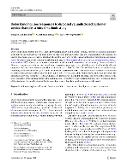Understanding users’ responses to disclosed vs. undisclosed customer service chatbots: a mixed methods study

Publication date
2024Published in
AI & SocietyVolume / Issue
39 (6)ISBN / ISSN
ISSN: 0951-5666ISBN / ISSN
eISSN: 1435-5655Metadata
Show full item recordCollections
This publication has a published version with DOI 10.1007/s00146-023-01818-7
Abstract
Due to huge advancements in natural language processing (NLP) and machine learning, chatbots are gaining significance in the field of customer service. For users, it may be hard to distinguish whether they are communicating with a human or a chatbot. This brings ethical issues, as users have the right to know who or what they are interacting with (European Commission, 2022). One of the solutions is to include a disclosure at the start of the interaction (e.g., "this is a chatbot"). However, companies are reluctant to use disclosures, as consumers may perceive artificial agents as less knowledgeable and empathetic than their human counterparts (Luo et al., 2019). The current mixed methods study, combining qualitative interviews (n = 8) and a quantitative experiment (n = 194), delves into users' responses to a disclosed vs. undisclosed customer service chatbot, focusing on source orientation, anthropomorphism, and social presence. The qualitative interviews reveal that it is the willingness to help the customer and the friendly tone of voice that matters to the users, regardless of the artificial status of the customer care representative. The experiment did not show significant effects of the disclosure (vs. non-disclosure). Implications for research, legislators and businesses are discussed.
Keywords
Anthropomorphism, Chatbots, Disclosure, Online customer care, Social presenceł, Source orientation
Permanent link
https://hdl.handle.net/20.500.14178/2758License
Full text of this result is licensed under: Creative Commons Uveďte původ 4.0 International




